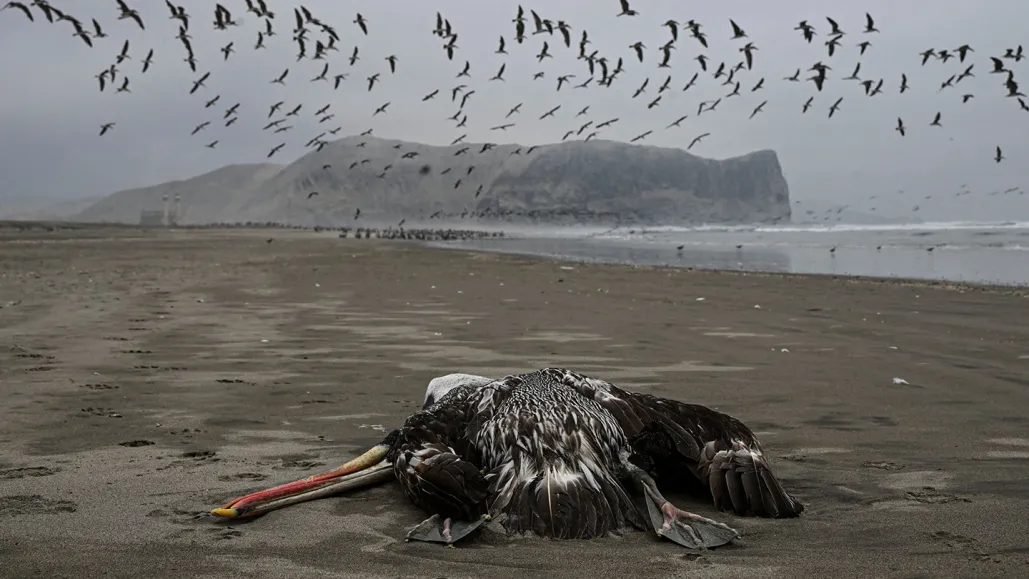Bird flu, formally known as High Pathogenic Avian Influenza (HPAI), has evolved from a localized poultry disease into a global pandemic affecting both wildlife and domestic animals. The journey of this virus, from its origins in China to its spread across continents and its recent incursion into Antarctica, illustrates a complex interplay of ecological, agricultural, and human factors.
Studying the Spread
Veterinary pathologist Lineke Begeman’s expedition to Antarctica’s Northern Weddell Sea in March 2024 sheds light on the relentless spread of bird flu. Cutting into frozen bird carcasses, her team confirmed the presence of the virus in this remote, wildlife-rich region. This systematic monitoring provides crucial warnings for the world about the consequences of the virus’s unchecked spread.
Devastating Impact
Bird flu’s impact on animals has been devastating. Over half a billion farmed birds have been slaughtered, and millions of wild birds have perished, with estimates of around 600,000 deaths in South America alone since 2023. The virus has also infected at least 26 species of mammals, including Antarctic fur seals, marking the first time it has been detected in this region.
Origins and Evolution
Bird flu’s journey began in China’s Guangdong region in 1996, when a farmed goose was diagnosed with the highly pathogenic strain H5N1. Initially a poultry disease, it spilled over into wild birds by 2005-06, spreading to Europe, Africa, and the Middle East. However, it was the emergence of a new strain in 2020 that allowed the virus to become endemic in wild bird populations, facilitating its global spread.
Human Role in the Pandemic
Human activity, particularly the demand for farmed meat, has fueled the spread of bird flu. The exponential growth in poultry farming has created ideal conditions for the virus to thrive. Poultry now forms over 70% of avian biomass worldwide, providing ample opportunities for the virus to spread and mutate.
Global Spread
Bird flu’s spread across continents has been facilitated by migratory birds. The virus’s detection in various species along migration routes, from North America to South America and now Antarctica, highlights its adaptability and resilience. Cross-species transmission increases the risk of human contact and mammal-to-mammal spread.
Human Health Threat
While relatively few human cases have been reported, the virus’s ability to jump species raises concerns about potential pandemics. The recent detection of a rare form of the virus in cattle and the first suspected case of mammal-to-human transmission in the US underscore the urgency of understanding and preparing for this threat.
Preventing Human Transmission
Preventing bird flu in humans poses challenges, but measures can be taken to limit its spread. Surveillance, biosecurity measures on farms, and compensation schemes for culling are essential. Vaccination of poultry, while effective, faces barriers due to trade restrictions, highlighting the need for better surveillance to ensure safe trade.
Conservation Impact
Bird flu’s toll on wildlife is unprecedented, affecting numerous species across regions. The spread of the virus in wild mammals, including seals and sea lions, raises concerns about its potential adaptation for mammal-to-mammal transmission. The loss of thousands of elephant seals during the 2023 breeding season underscores the urgency of monitoring and conservation efforts.
Helping Wildlife Cope
Reducing other pressures on wildlife, such as climate change and habitat loss, could aid their survival amidst the bird flu pandemic. Measures like fisheries mitigation to reduce seabird bycatch and ongoing monitoring of affected populations are crucial for conservation efforts.
Conclusion
Bird flu’s evolution into a global animal pandemic serves as a stark reminder of the interconnectedness of ecosystems and human activity. While the virus poses significant challenges, proactive measures such as surveillance, vaccination, and conservation can mitigate its impact. By understanding and addressing the root causes of its spread, we can better prepare for future outbreaks and protect both wildlife and human health.





